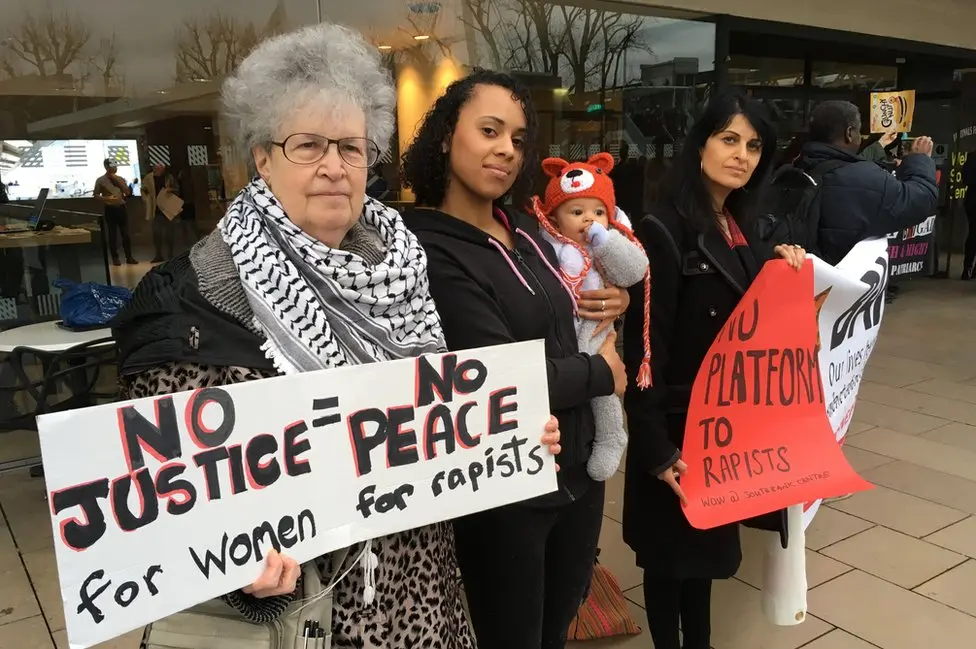Sixteen-year-old Thordis Elva was getting ready for her school’s Christmas dance with Tom Stranger, an 18-year-old exchange student from Australia. At the dance, Thordis drank rum for the first time and became sick. When Tom offered to take her home safely, she felt nothing but gratitude. “It was like a fairy tale,” she would later remember, describing how his strong arms carried her to what she thought was the safety of her bed. That gratitude however, turned to shock as Tom removed her clothes and sexually assaulted her while she lay helpless and unable to fight back. To survive the rape, the survivor focused on the only thing she could control, she later mentioned in interviews.
She silently counted seconds on her alarm clock. All 7,200 of them, marking two hours that would haunt her for years to come. Days later, Tom ended the relationship and returned to Australia, leaving Thordis alone with a painful secret that would destroy her.
How Rape Silenced One Survivor for Nine Years
For nearly a decade, Thordis couldn’t even name what had happened. The attack didn’t match her understanding of sexual assault, which movies and media had shaped by portraying it as violent strangers in dark alleys, not boyfriends in bedrooms. This mismatch trapped her in silence and self-blame.
Her life began to unravel in ways her family couldn’t understand. Soon, eating disorders developed. She began cutting herself. Depression consumed her. To those around her, it looked like typical teenage heartbreak from her first relationship. Meanwhile, Tom, back in Australia, lived in denial, convincing himself that the encounter had been consensual rather than confronting the harsh truth of his actions.
Read More: A Dark Chapter in German Foster Care: Children Placed with Pedophiles
The Letter That Changed Everything
At 25 in 2005, Thordis approached a nervous breakdown, consumed by what she described as “misplaced hatred and anger” that she directed at herself. Reaching her breaking point, she made a life-changing decision and wrote Tom a letter laying out exactly what he had done and how it had changed her life.

However, his response was unlike anything she could have expected. Instead of denials or excuses, Tom replied immediately with two words that cut through years of his own self-deception. “I raped you.” He took complete responsibility for his actions and offered to do “whatever I can do” to help her heal. This unexpected confession opened an unexpected door between the rape survivor and her attacker.
From Letters to Face-to-Face
Eight years of email exchanges followed, dissecting the trauma piece by piece. Tom came to understand the damage he had caused while Thordis worked toward forgiveness. The correspondence grew into something extraordinary. They planned a face-to-face meeting to confront the shared past.
In 2013, seventeen years after the assault, they met in Cape Town, South Africa. For one intense week, they had unimaginable conversations where Tom said the word aloud, “Rapist,” and Thordis shared her journey from victim to survivor.
These painful exchanges forced both to confront the darkest moment of their lives. Still, something emerged from that week of difficult conversations. Eventually, They realized the experience might have something important to offer the world.
Going Public with an Unusual Collaboration
Eventually, the 2017 book “South of Forgiveness” became the first collaboration between a sexual assault survivor and her confessed attacker. A 2016 TED Talk has been viewed by over 2.7 million people, with Tom refusing any payment and donating his share of book profits to charity.
But this unusual collaboration raised uncomfortable questions that divided public opinion. Should a confessed perpetrator be given a platform, even for education?
Read More: 4 Guys Follow Drunk Teen With Her “Dad’ When Hunch Tells Them Something Is Not Right
The Rape Case That Divided Survivors

The debate reached a boiling point in 2017 outside London’s Royal Festival Hall, where protesters gathered with banners and loudspeakers, chanting “There’s a rapist in the building. Get the rapist out,” according to media reports. A planned event had already been dropped from the Women of the World Festival following pressure from campaigners, only to be rescheduled after organizers decided the debate was too important to silence.
Beyond the protests, critics raised serious concerns about giving Tom a platform, worrying it could trigger other survivors or encourage perpetrators to contact victims. For instance, activist Liv Wynter argued that he was benefiting from ‘cultural capital,’ gaining respect and attention despite his past actions.
Defending an Unconventional Approach
In response, Thordis has defended the collaboration, arguing it serves a larger purpose in shifting society’s focus from questioning survivors to examining perpetrators. Her approach, which she calls “demonstrification,” aims to show that perpetrators aren’t movie monsters. They are ordinary people who make horrific choices. “The fact that Tom wasn’t a monster made it harder for me to see his crime for what it was,” she said. This realization became important to her recovery. Similarly, Tom believes men need to be part of conversations about sexual violence. So together, they challenge conventional wisdom with a simple message. Sexual violence should stop being treated as solely a women’s issue.
An Ongoing Debate
Today, this collaboration between a rape survivor and her attacker remains one of the most debated approaches to sexual violence ever attempted. Supporters see powerful work that could prevent future violence. It forces society to confront uncomfortable truths about accountability and healing. Critics argue it gives dangerous legitimacy to a perpetrator’s perspective, potentially setting a harmful precedent.
The London event proved the central argument perfectly. After hundreds attended the presentation, organizers held a men-only follow-up discussion. Only two men showed up. This turnout exposed exactly what Thordis and Tom were fighting against. The widespread male reluctance to engage with sexual violence as anything beyond “a women’s problem.”
For now, whether the experiment helps or harms the broader conversation remains unknown. But they have succeeded in forcing a dialogue that society prefers to avoid, refusing to let the most uncomfortable questions about sexual violence remain unasked. Perhaps that unwelcome conversation is exactly what we need to finally address one of our most persistent problems.
Read More: Beneath The Glossy Surface Of Dubai Lies A Hidden World You Never Imagined

